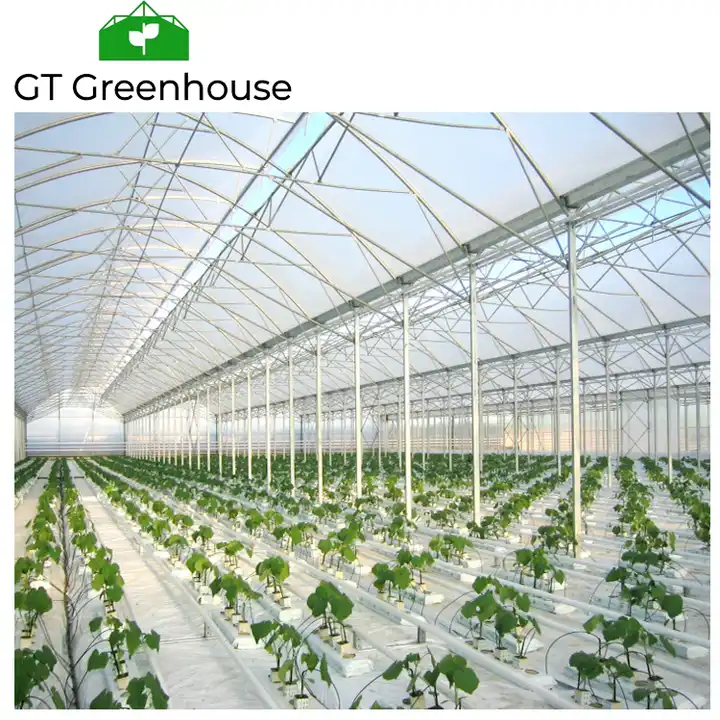As the world grapples with the challenges of climate change and food security, the agricultural industry is turning to innovative solutions to enhance productivity and sustainability. Among these solutions, smart greenhouses have emerged as a groundbreaking technology that revolutionizes traditional farming practices. By integrating advanced sensors, automation, and data analytics, smart greenhouses offer a host of benefits and applications that have the potential to reshape the future of agriculture. In this article, we will explore the advantages and diverse applications of smart greenhouses.
Enhanced Environmental Control
One of the key benefits of smart greenhouses is the ability to precisely control environmental parameters. Advanced sensors continuously monitor factors such as temperature, humidity, light intensity, and CO2 levels. This real-time data is then used to automate adjustments to optimize growing conditions. By maintaining ideal environmental parameters consistently, smart greenhouses create an optimal microclimate for plants, leading to improved crop quality and increased yield.
Resource Efficiency
Smart greenhouses excel in resource management, offering significant efficiency gains. With real-time data on environmental conditions, growers can optimize resource usage. Automated systems control irrigation, fertigation, and nutrient delivery, ensuring plants receive the right amount of water and nutrients. This precision minimizes waste, reduces water consumption, and lowers the need for chemical inputs. Additionally, energy usage is optimized through intelligent control of lighting, ventilation, and heating systems, resulting in reduced energy costs and environmental impact.
Pest and Disease Management:
Smart greenhouses employ advanced monitoring systems to detect and prevent pest and disease outbreaks. Sensors and cameras integrated into the greenhouse environment can identify early signs of infestations or plant diseases. This early detection enables prompt intervention measures, such as targeted pesticide application or isolation of affected plants. By mitigating the spread of pests and diseases, smart greenhouses reduce crop losses and the reliance on chemical interventions.
Data-Driven Decision Making
The wealth of data collected by sensors and monitoring systems in smart greenhouses empowers growers with valuable insights. Through data analytics and predictive modeling, growers can gain a deep understanding of plant behavior, growth patterns, and performance. This knowledge enables data-driven decision making, optimizing crop management strategies, and maximizing yields. Furthermore, historical data can be combined with external factors such as weather forecasts to fine-tune cultivation practices and enhance operational efficiency.
Year-Round Production and Crop Diversification
Smart greenhouses extend the growing season and enable year-round production. By offering precise control over environmental conditions, growers can cultivate crops beyond their natural seasons or in regions where they are not traditionally grown. This flexibility allows for continuous production, increased crop diversification, and the ability to meet market demands throughout the year. Smart greenhouses provide opportunities for niche and high-value crops, contributing to a more sustainable and resilient agricultural system.
Remote Monitoring and Control
The integration of smart technologies enables remote monitoring and control of greenhouse operations. Growers can access real-time data, receive alerts, and remotely adjust environmental parameters from anywhere using mobile devices or computers. This capability provides convenience, flexibility, and peace of mind, allowing growers to monitor and manage their greenhouse operations even when physically absent. Remote access also facilitates collaboration and knowledge-sharing among growers, fostering a community-driven approach to agriculture.
Scalability and Adaptability
Smart greenhouse technology is scalable and adaptable to various farming operations. It can be implemented in small-scale urban farms, commercial greenhouse complexes, and even vertical farming systems. The modular nature of smart greenhouse systems allows for easy expansion and customization to meet specific requirements. Whether it’s a small rooftop greenhouse or a large-scale commercial operation, the benefits and applications of smart greenhouses can be tailored to suit different farming needs.
Smart greenhouses represent a paradigm shift in agriculture, leveraging advanced technologies to create efficient, sustainable, and productive growing environments. With enhanced environmental control, resource efficiency, pest and disease management, and data-driven decision making, smart greenhouses offer numerous benefits to growers and the wider agricultural industry. By extending the growing season, diversifying crop production, and enabling remote monitoring and control, these futuristic structures pave the way for a more resilient and secure food system. As we embrace the potential of smart greenhouses, we embark on a path toward a more sustainable, efficient, and technology-driven future in agriculture.

